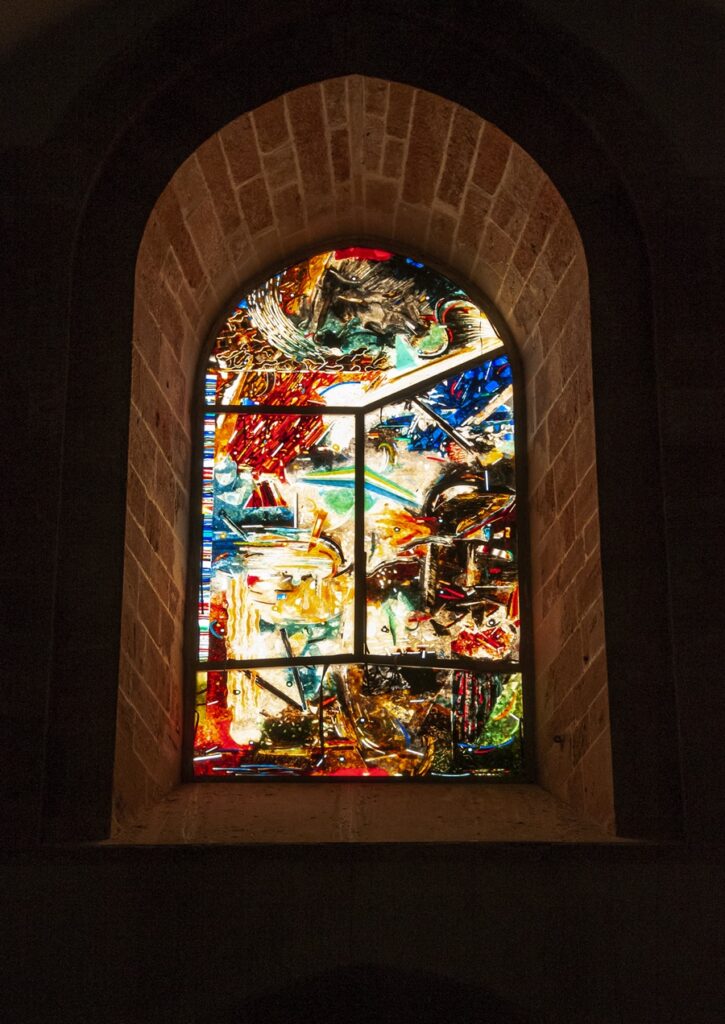The Cefalù Cathedral’s stained-glass windows are contemporary, designed and made by Palermo artist Michele Canzonieri since 1985 and first used in the 1990s.
In medieval churches, stained-glass windows are symbolic of light and represent the divine presence on earth. According to this principle, Canzoneri’s stained-glass windows are an allegory of light and Transfiguration, thanks to the masterful use of intense and refined chromatic backgrounds, as well as a wise study of transparency.
There are 72 stained-glass windows with different iconography, all characterized by luminous and evanescent colours so that the contemporary interacts perfectly with the ancient. On the main façade to the west, the depiction of the Last Judgement is featured; in the naves, the central one is characterised by the story of the creation of the stars, the sun, the moon, as well as the fish, the birds, the animals, the earth, and finally man and woman in the Garden of Eden. The stories of St. Paul and St. Peter are depicted in the side aisles. The southern windows are dedicated to St. Paul, with the following themes: Saul being blinded on the road to Damascus, Ananias enlightening Paul, Barnabas presenting Paul to the Apostles, the Jewish reaction to Paul and Silas in prison, Paul and Silas being freed from prison, Paul evangelising the Athenians, the Resurrection of Eutychus, Paul in Syracuse. On the north side, the stained glass windows represent the life of St. Peter: Peter’s evangelisation, the baptism of the new Christians, the first Christian community, Ananias and Sapphira, St. Peter in prison, the Apostle being freed from prison, Peter evangelising Cornelius’ house, the Resurrection of Tabitha, Peter in Rome.
Several subjects are represented in the apse: the Resurrection of Lazarus, the Resurrection of Jesus, the Entry into Jerusalem, the Crucifixion, the Birth, the Presentation in the Temple, the Baptism, the Ascension, the Pentecost, the Annunciation and the Assumption of Mary.
The Transfiguration is represented in the central window of the apse, which receives light from the east. The themes dealt with in the transpets concern the Revelation of John: the Seven Churches, the Throne of God, the Lamb, the Seven Seals, the Chosen Ones, the Seven Trumpets, the Woman and the Dragon, the Sea Beast and the Earth Beast, the Harvest and the Grape Harvest, the sea of glass and fire, the Ark of the New Covenant and the Seven Angels; the Seven Bowls, Babylon, the Seven Heads, Christ victorious, the heavenly Jerusalem.